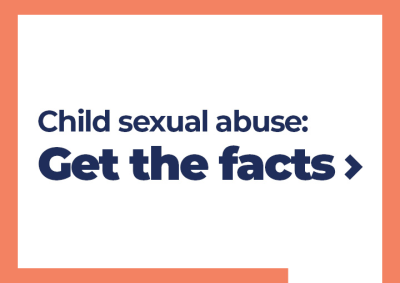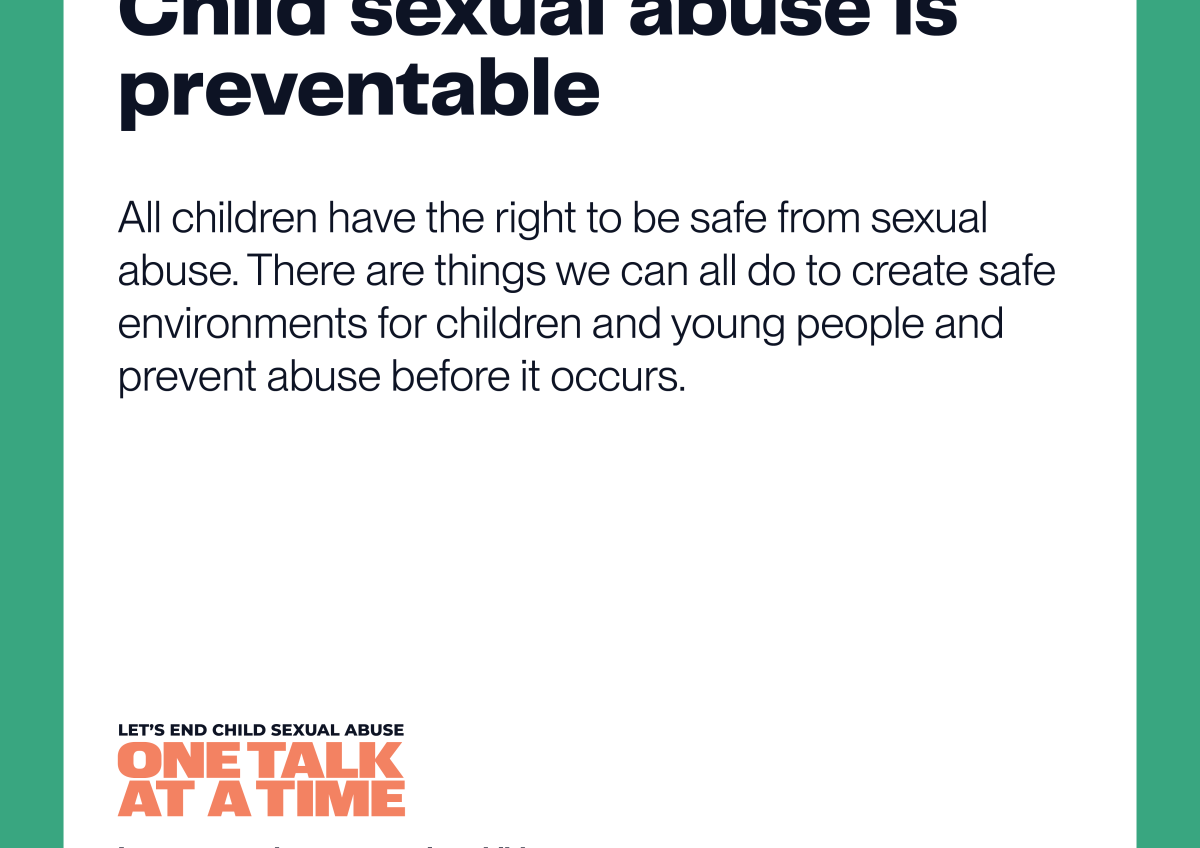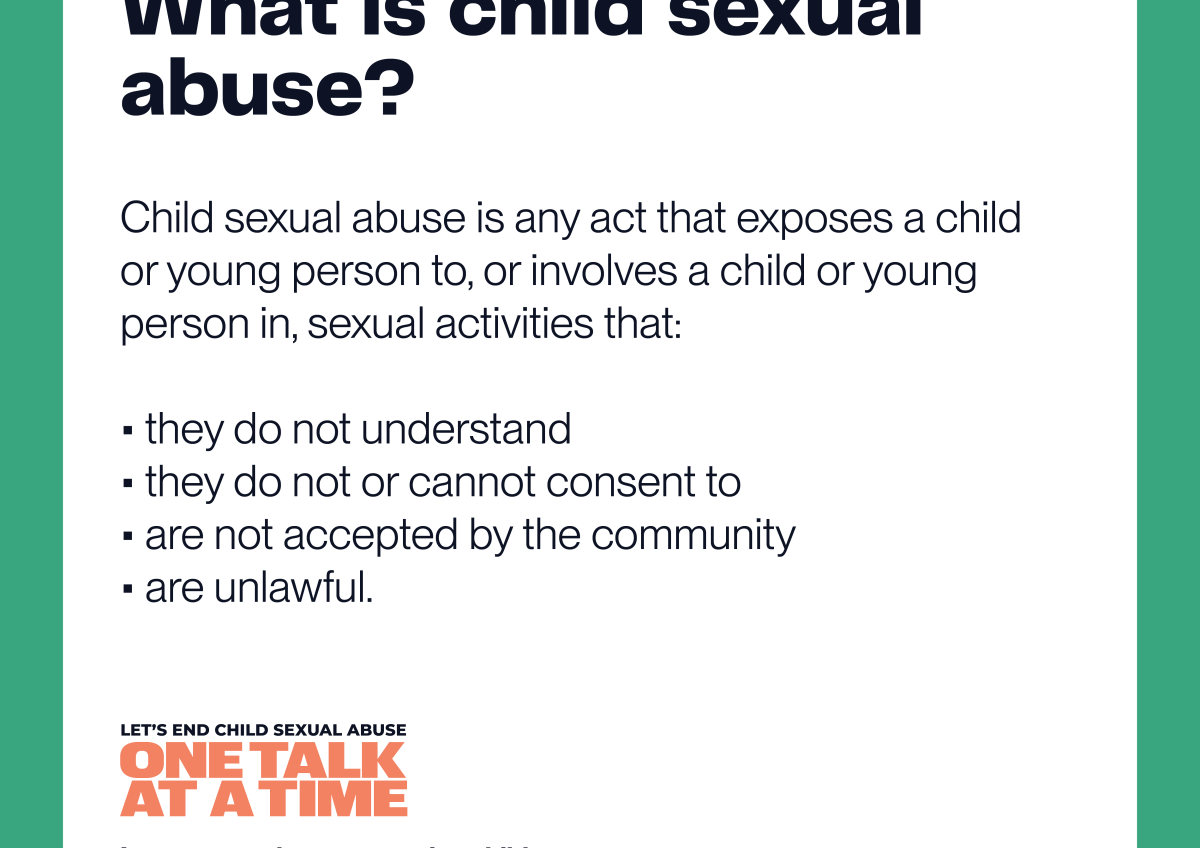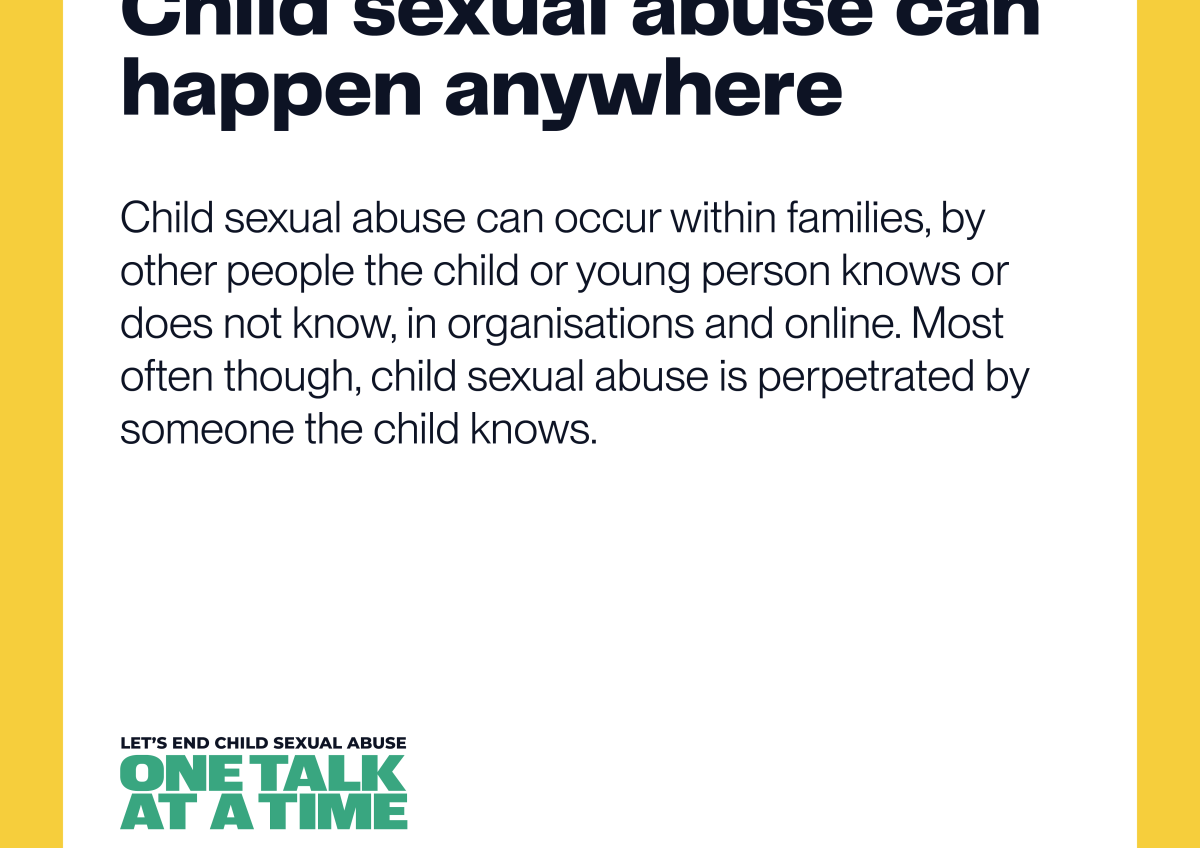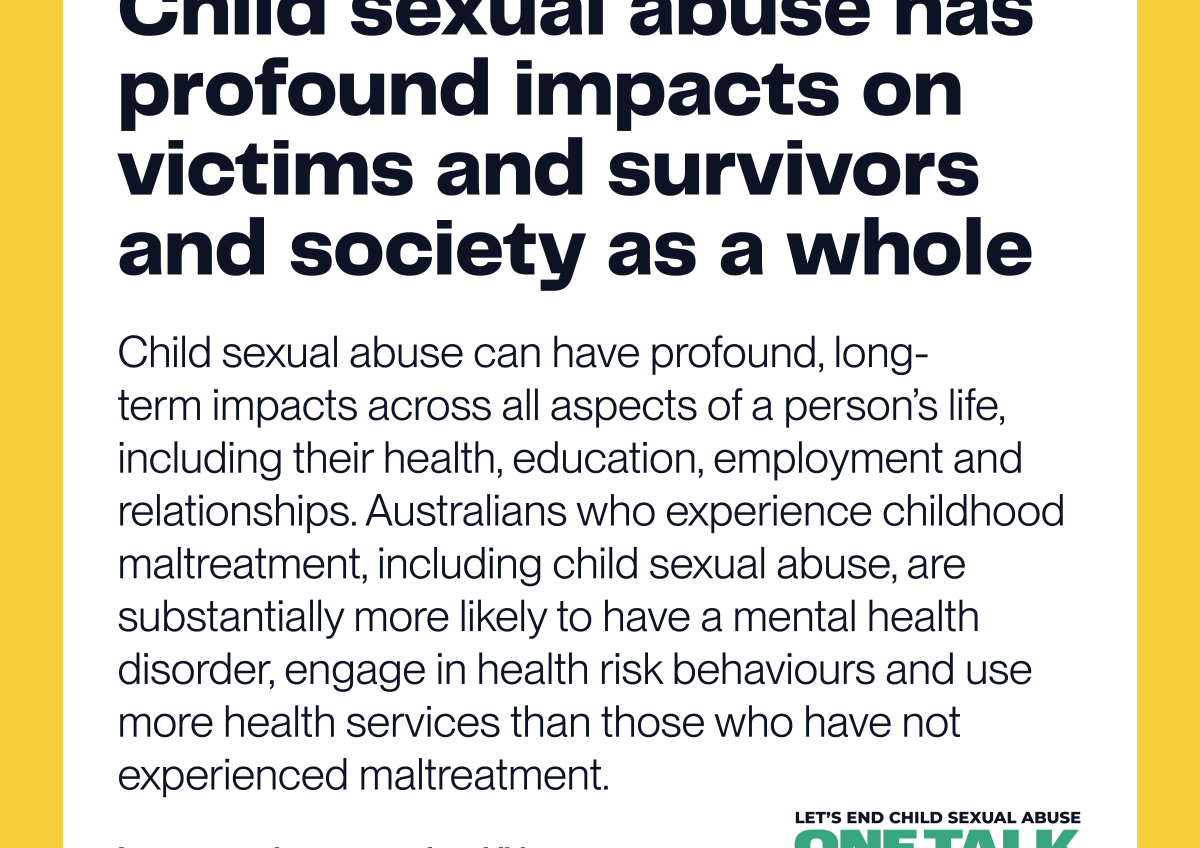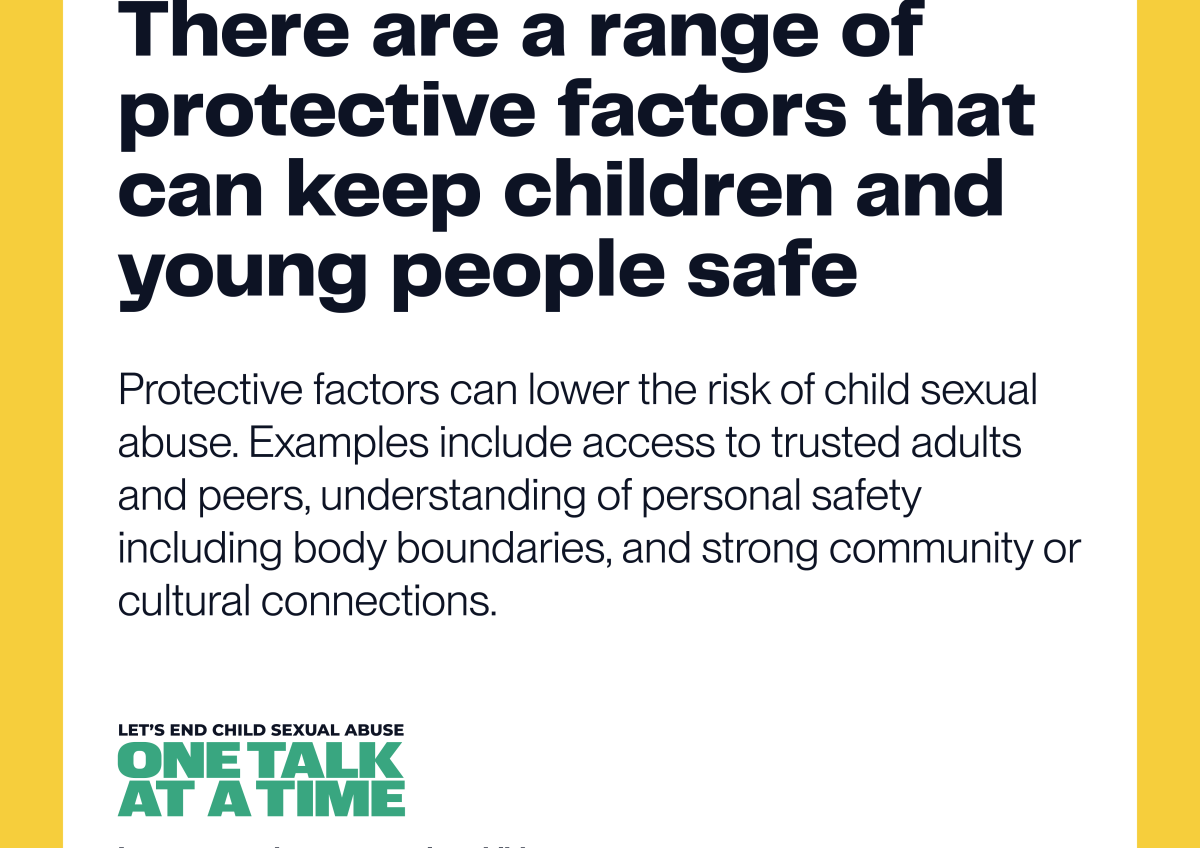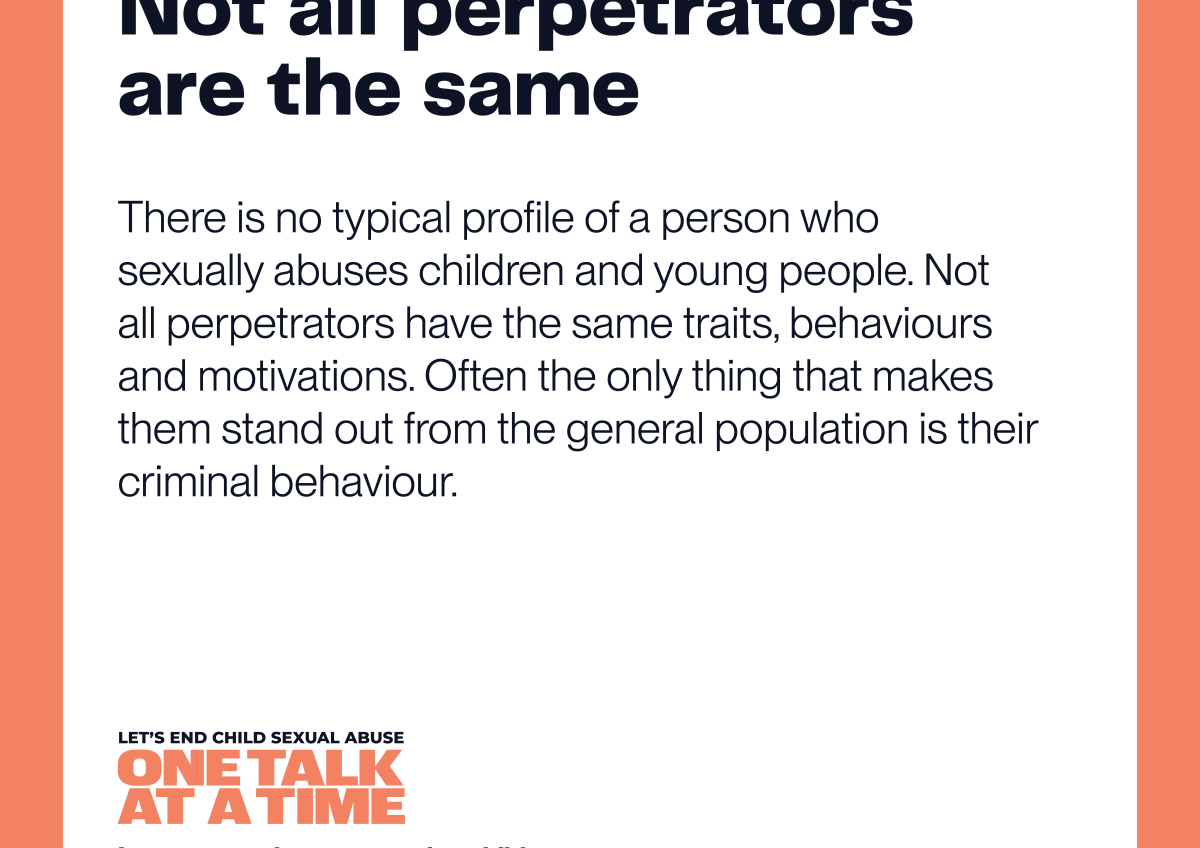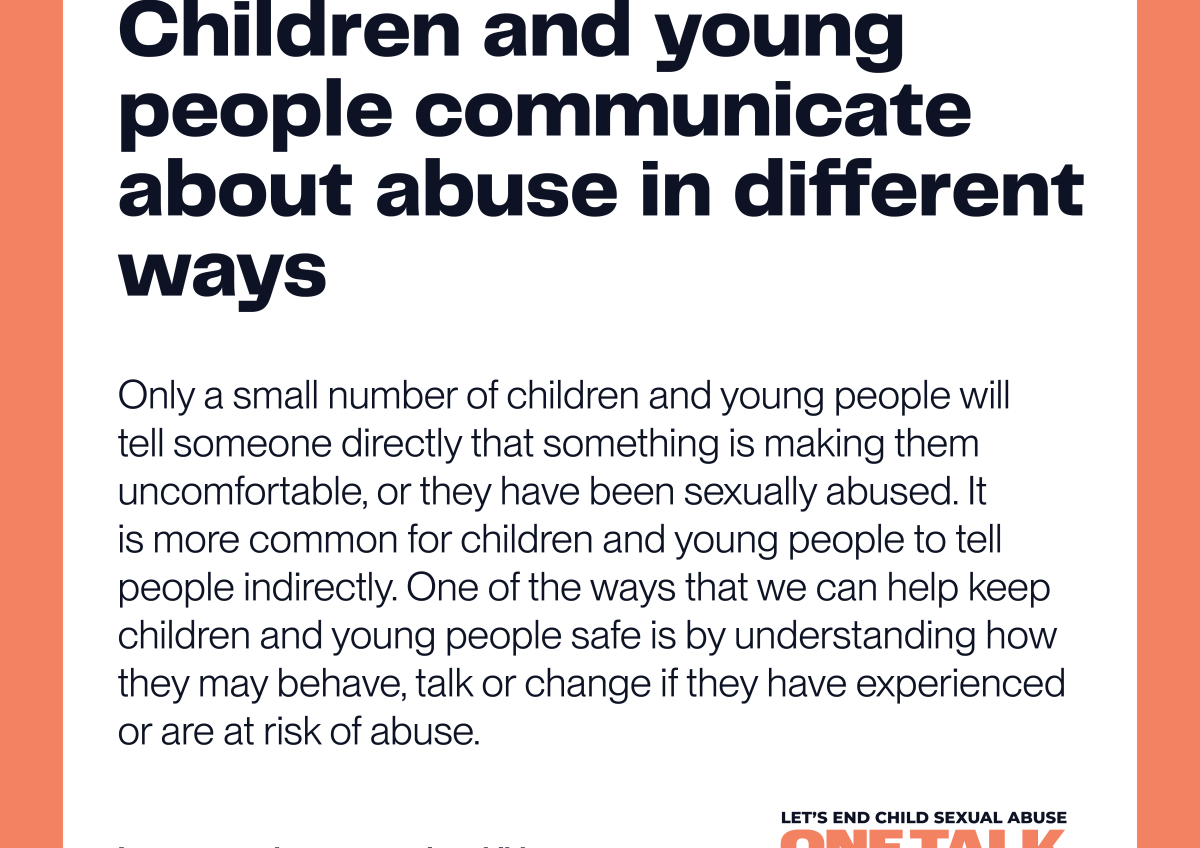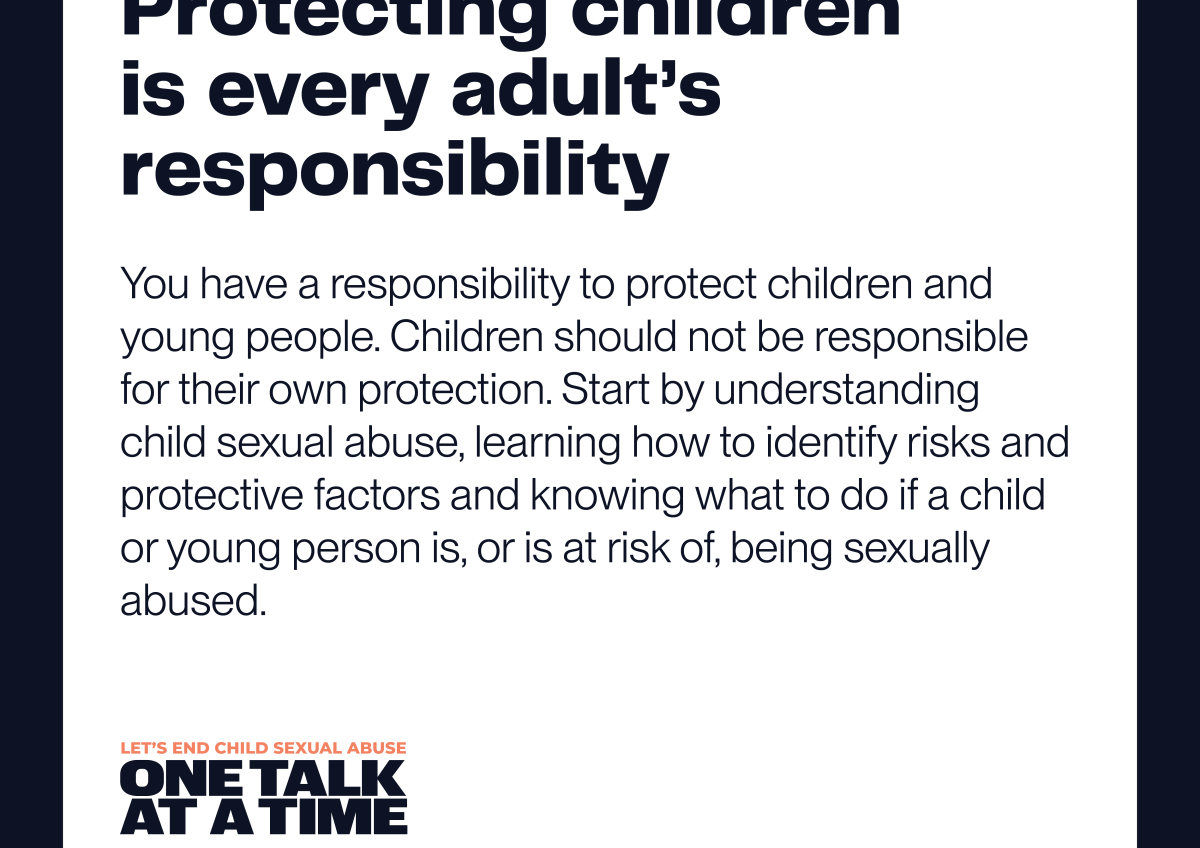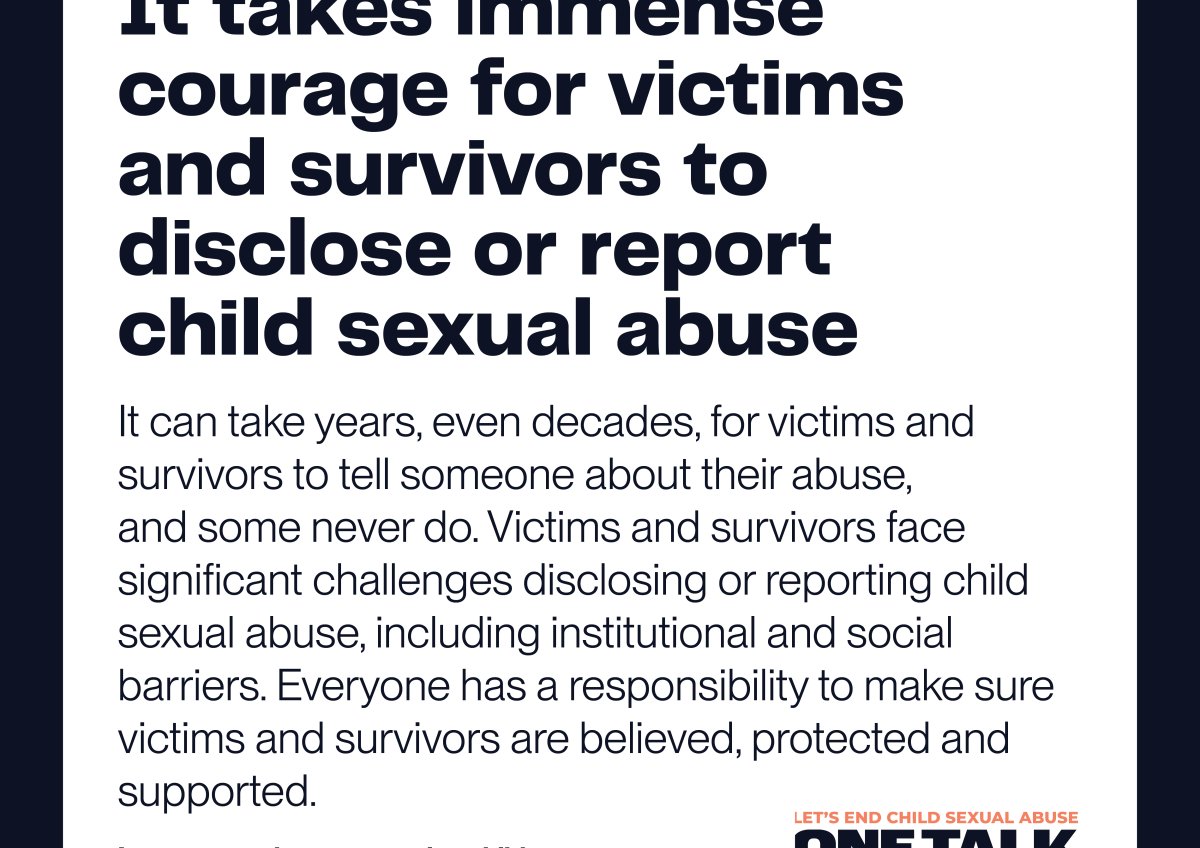What is child sexual abuse?
Understanding what child sexual abuse is, how it occurs, and how to create safer environments for children and young people is an important step in preventing it.
Help is available if you, or someone you know, has experienced, are experiencing, or are concerned that a child or young person may be at risk of harm, including child sexual abuse. If you need assistance or support, our Get support page provides a list of dedicated services. If you need information or resources for reporting child safety concerns, please visit our Make a report page.
If you or a child are in immediate danger, call Triple Zero (000).
Definition
Child sexual abuse is illegal in Australia. Each state and territory has different terminology and laws relating to child sexual abuse. The Australian Government also has laws about child sexual abuse, including laws specifically related to grooming.
The National Office for Child Safety (National Office) defines child sexual abuse as any act that exposes a child or young person to, or involves a child or young person in, sexual activities that:
- they do not understand
- they do not or cannot consent to
- are not accepted by the community
- are unlawful.
This definition is from the National Strategy to Prevent and Respond to Child Sexual Abuse 2021-2030 (National Strategy) and was informed by the language and definition used in the Royal Commission into Institutional Responses to Child Sexual Abuse (Royal Commission). Terminology and definitions around child sexual abuse are not universally agreed, and those used by the Royal Commission and in the National Strategy were carefully considered and informed by victims and survivors, along with other experts.
When talking about our work, the National Office uses the term ‘children and young people’ to refer to those under the age of 18.
The National Office uses the term ‘victims and survivors’ to refer to those who have experienced child sexual abuse. We recognise that victims and survivors of child sexual abuse come from all walks of life, and not all people with lived experience of child sexual abuse will identify with these terms. Some people may prefer to identify with just one of these terms, a different term, or not identify with a term at all. It is important to always ask someone what their preference is.
Victims and survivors might understand right away that what happened to them was abuse or many years might pass before a person understands that they have been abused. Everyone’s experience of child sexual abuse is different. However, child sexual abuse is always serious and is never the fault of the child or young person who has been abused.
Age of consent
Australia’s laws recognise that children cannot consent to sexual activity. The ‘age of consent’ is the age at which a person is considered legally capable of agreeing to sexual activity. The age of consent is either 16 or 17 in Australia, depending on the state or territory. Some jurisdictions have exceptions to this based on factors such as the relationship between the individuals involved, their age difference and whether one person holds a position of authority over the other. Power dynamics naturally exist between adults and children and young people in many settings, particularly in family, organisational and social relationships. These dynamics can limit a child’s or young person’s choice and control, increasing their vulnerability. You can find out more about the age of consent on Knowmore’s website.
The National Centre for Action on Child Sexual Abuse has developed a handout on the legal age of consent in Australia. It provides detailed information about the age at which individuals can legally engage in sexual activities. It is aimed at practitioners but is useful for anyone looking for further information about the legal age of consent in Australia.
It’s important to note that the age of consent is a legal threshold indicating when a person is considered capable of consenting to sexual activity. However, being above the age of consent does not automatically mean that all sexual activity is consensual or lawful. Sexual activity involving a person above the age of consent but under 18 may still be considered child sexual abuse if it occurs without consent, or involves coercion, exploitation or a power imbalance.
Examples of child sexual abuse
Child sexual abuse can take many different forms and does not always involve physical contact. Examples of child sexual abuse include:
- grooming
- sexual or inappropriate touching
- showing private parts or genitals
- making a child pose, undress or do sexual or inappropriate acts
- talking to a child in a sexual or inappropriate way
- making a child look at sexual or inappropriate photos or films
- making, sharing or possessing child exploitation material.
Child sexual abuse can occur within families, by people the child or young person knows or does not know, in organisations and online. It can occur once or more than once.
Child sexual abuse online
Child sexual abuse online, sometimes referred to as online child sexual exploitation and/or abuse, involves the use of technology to sexually abuse a child. Examples of this include:
- online grooming
- a child being coerced by an adult to send nude or exposing images or videos of themselves
- an adult showing their genitals to a child via livestream
- a child being threatened or blackmailed after sending a sexualised image of themselves.
For more information about child sexual abuse online, visit the eSafety Commissioner and Australian Centre to Counter Child Exploitation websites.
Other helpful resources
Our website contains further information about child sexual abuse, as well as information about getting support and making a report about child sexual abuse. We all have a responsibility to be educated about child sexual abuse to protect children and young people and support victims and survivors.
The National Centre for Action on Child Sexual Abuse has developed a ‘What is child sexual abuse?’ practice tool that provides further information and examples of child sexual abuse.
Knowmore provides free independent legal advice and support for survivors of child abuse. Their website includes information about child sexual abuse, grooming and child exploitation material.
You can visit the Bravehearts website for more information about child sexual abuse.
The Raising Children Network website contains information for parents about child sexual abuse.

